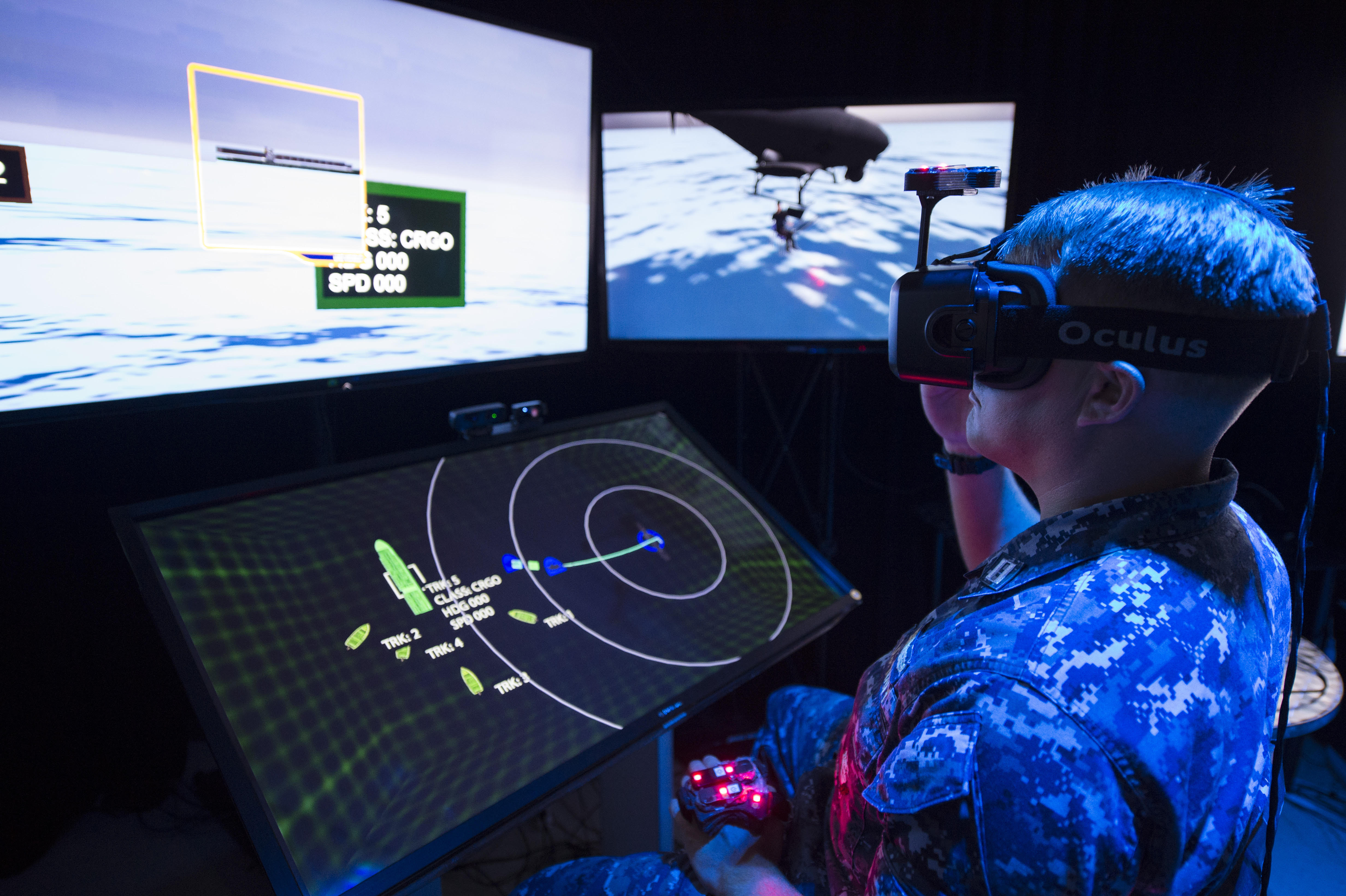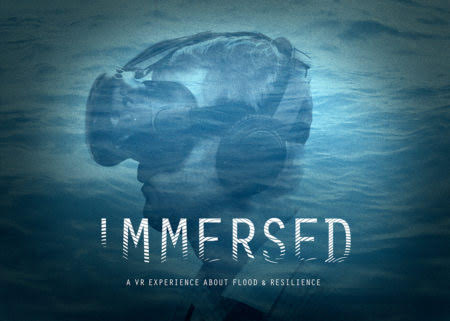
The Office of Naval Research (ONR)-sponsored Battlespace Exploitation of Mixed Reality (BEMR) lab located at Space and Naval Warfare Systems Center Pacific is designed to showcase and demonstrate cutting edge low cost commercial mixed reality, virtual reality and augmented reality technologies and to provide a facility where warfighters, researchers, government, industry and academia can collaborate. (U.S. Navy photo by John F. Williams/Released)
Immersive enhanced audio and visual experiences through virtual and augmented reality are now available to the American public through smartphones and other mobile devices, opening the door to an incredible diversity of new programs and services.
GSA’s Emerging Citizen Technology program launched the Federal Virtual/Augmented Reality program in October, 2017 to serve as a collaborative hub for the research and refinement of VR and AR business cases and pilot programs across government.
Federal agencies are eager to share their ideas on how this new medium might expand and improve their services–using virtual therapy to treat PTSD or disaster management preparedness and response. To help explore and share these great ideas, we host workshops where agencies and industry specialists can brainstorm and demonstrate the new technologies.
There are many uses for AR/VR in the public sector, and as with any new technological innovation, its potential is limited only by the creativity and ingenuity of its users. We’ve gathered some use cases from across government, of how this technology is helping agencies provide an improved experience for the American public:
- IMMERSED: To help educate community leaders about the value of preparing for the worst, FEMA has created a virtual reality experience tool to put users at the center of a flood crisis, allowing them to assess damage in a community and see the benefits of mitigation first-hand. Flooding is our nation’s most common and costly natural disaster, which is why it’s critical for community leaders to be equipped with the information, tools and skills needed to take mitigation action.

To learn more about the IMMERSED experience, visit FEMA’s webpage or subscribe to the FEMA Podcast on iTunes, which features IMMERSED in the May 9 edition. - 2018 Virtual Reality Heads-Up-Display Navigation Challenge: NIST Public Safety Communications Research Program is hosting a 4-stage challenge, with prize awards up to $125,000 (prizes plus travel) for the top 7 designs. The result of the First Responder Virtual Reality (VR) Heads-up-Display (HUD) Navigation Challenge will support the public safety community and its stakeholders. Stage 4, the final stage, will be judged at the 2018 Public Safety Broadband Stakeholder Meeting. Attendees at the conference will have the opportunity to view and walk through the demo of each VR HUD Challenge team submission.
- EdSim Challenge: The U.S. Department of Education held the EdSim Challenge which culminated in the fall of 2017. They were looking for concepts for immersive simulations that transfer academic, technical, and employability skills. Successful simulations paired the engagement of commercial games with rigorous educational content to prepare students for the 21st century workforce. The winner developed a highly-mobile surgical training platform that enables healthcare professionals to practice cutting edge techniques through realistic, hands-on simulations.
- Enhanced Dynamic Geo-Social Environment (EDGE): a multiplayer, scalable, online training environment for first responders—single agencies or across agency, jurisdiction, or discipline—for a coordinated response to critical incidents. The platform allows responders of all disciplines to assume discipline-based avatars and simultaneously role-play complex response scenarios. EDGE is available free of charge to all first responder organizations. Visit DHS Science and Technology website for more information.
- The Veterans Affairs (VA) Virtual Medical Center: An immersive three-dimensional virtual world in which veterans and VA staff can attend virtual presentations, conferences, and therapy sessions from anywhere in the world. There is also a Virtual Education Training Assistant (VETA) and a Patient Cybrary for patients while VA healthcare professionals have the Healthcare Cybrary. Visit the VMC website for more information.
Get Involved
We’d love to hear from you! Know of any current VR/AR programs or efforts to implement across government? Please reach out and share your story.
If you are a government employee with a .gov or .mil email address, join our Virtual and Augmented Reality Community
To join our public listserv for Virtual and Augmented reality, contact listserv@listserv.gsa.gov with the message body “SUB VRARPublic.”
